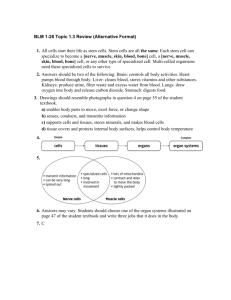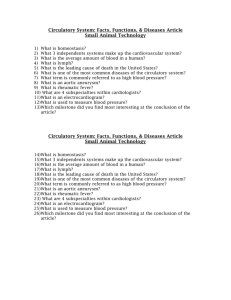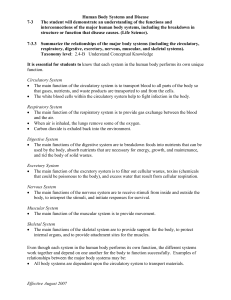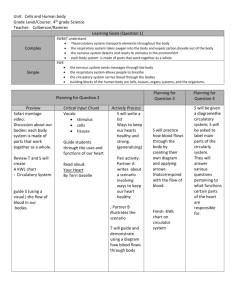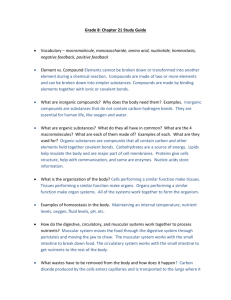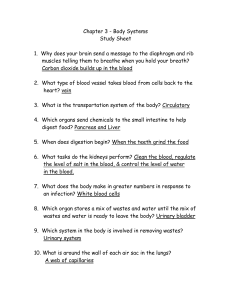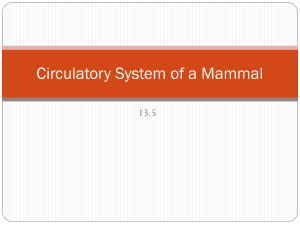Circulatory System Animal Comparison for Evolution
advertisement
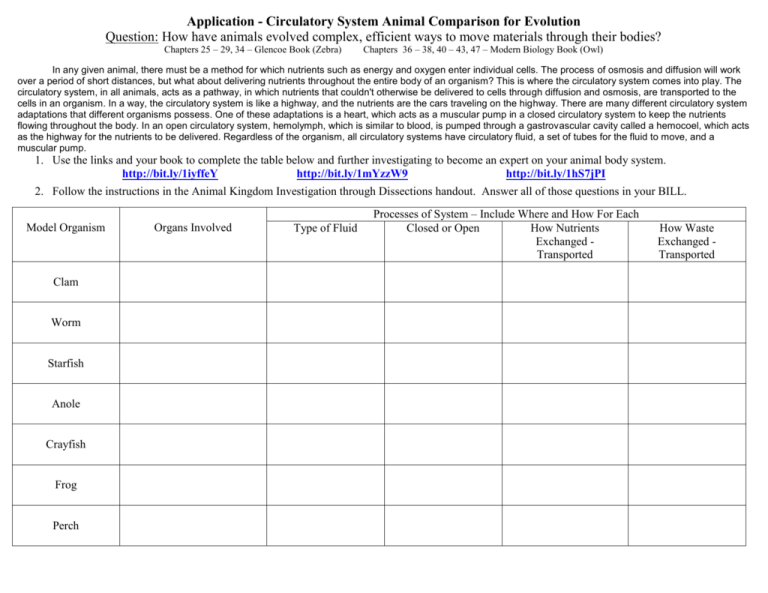
Application - Circulatory System Animal Comparison for Evolution Question: How have animals evolved complex, efficient ways to move materials through their bodies? Chapters 25 – 29, 34 – Glencoe Book (Zebra) Chapters 36 – 38, 40 – 43, 47 – Modern Biology Book (Owl) In any given animal, there must be a method for which nutrients such as energy and oxygen enter individual cells. The process of osmosis and diffusion will work over a period of short distances, but what about delivering nutrients throughout the entire body of an organism? This is where the circulatory system comes into play. The circulatory system, in all animals, acts as a pathway, in which nutrients that couldn't otherwise be delivered to cells through diffusion and osmosis, are transported to the cells in an organism. In a way, the circulatory system is like a highway, and the nutrients are the cars traveling on the highway. There are many different circulatory system adaptations that different organisms possess. One of these adaptations is a heart, which acts as a muscular pump in a closed circulatory system to keep the nutrients flowing throughout the body. In an open circulatory system, hemolymph, which is similar to blood, is pumped through a gastrovascular cavity called a hemocoel, which acts as the highway for the nutrients to be delivered. Regardless of the organism, all circulatory systems have circulatory fluid, a set of tubes for the fluid to move, and a muscular pump. 1. Use the links and your book to complete the table below and further investigating to become an expert on your animal body system. http://bit.ly/1iyffeY http://bit.ly/1mYzzW9 http://bit.ly/1hS7jPI 2. Follow the instructions in the Animal Kingdom Investigation through Dissections handout. Answer all of those questions in your BILL. Model Organism Clam Worm Starfish Anole Crayfish Frog Perch Organs Involved Type of Fluid Processes of System – Include Where and How For Each Closed or Open How Nutrients Exchanged Transported How Waste Exchanged Transported


